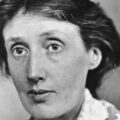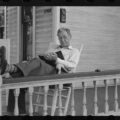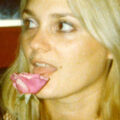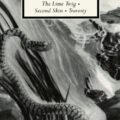This wave in the mind: Woolf in the middle of my life’s journey

The following essay won second place in the 2017 Geneva Writers’ Group Literary Awards for Nonfiction, judged by Nick Barlay.
The house was full of excitement bursting and receding like waves described as “smashed glass” in Virginia Woolf’s most autobiographical novel. Some of us needed this outing. Some of us had no interest at all. It’s always that way, I thought, as I stuffed my copy of To the Lighthouse into a canvas bag with tubes of sun cream, a camera, and a wad of paper towels. The book’s summer tensions centered on a child’s longing for an “expedition” to the lighthouse across the bay from the Isle of Skye and his father’s vision of life as a series of well-ordered achievements resembling the alphabet. Such tensions had become familiar. Our own summer place was a coastal Maine village. Our destination a distant hump on the horizon. And my partner was in the waning years of his academic career.
“We should get out there this summer,” he had said many times. He said this with a sense of resignation now, knowing that his latest edition of Abacus to Zeus: A Dictionary of Art Historical terms was due in New York by the end of July. “There’s a lighthouse out there, you know.” I nodded, preoccupied with Virginia’s house full of characters.
Though set in the Hebrides between 1910 and 1920, the inspiration for To the Lighthouse can be traced to the author’s memories of St. Ives, on the coast of Cornwall. From the house her parents kept there, the family could see Godrevy Lighthouse standing stiff as a mummy, sealed tight against the wind. Virginia sailed to that landmark as a child with her younger brother, Thoby, on a day when her brother Adrian, “much disappointed,” was not allowed to go. She returned to the lighthouse with her sister Vanessa after both parents had died. Thoby was gone then too, lost to typhoid at age twenty-three. She returned to the lighthouse after the war as well.
She returned in her mind a thousand times.
These facts hover over six-year-old James Ramsey, who sits on the floor clipping a bright, white refrigerator from the pages of the Army and Navy Stores catalog at the opening of the novel. With his yearning for the lighthouse stoically repressed and Oedipal hatred of his father in check, the child snips carefully with long scissors basking in his mother’s attention. The reader arrives as suddenly as a summer visitor, just in time to hear Mrs. Ramsey reply to her son’s pleading.
“Yes of course, if it’s fine tomorrow,” she says. “But you’ll have to be up with the lark.” Her good cheer showers her child with “extraordinary joy, as if it were settled and the expedition bound to take place …”
“But,” the boy’s father adds as he passes by the window, “it won’t be fine.”
Mrs. Ramsey perceives her husband’s invasion of this moment as “the arid scimitar of the male.” She sees beyond his mask of brilliance that slips now and then to reveal other traits. He is “sarcastic,” he is “caustic,” and he is oddly satisfied with himself as he broadcasts distress signals to his wife and son. The student who accompanies him scurries to confirm his mentor’s point of view: “No going to the lighthouse, James.”
James’s mother ignores the menace: “Perhaps you will wake up and find the sun shining and the birds singing.” Only later does she concede that, given the weather, the expedition is unlikely. James asks again, just before bed, “Are we going to the lighthouse?” Mrs. Ramsey sighs, for she is “certain he was thinking, we are not going to the lighthouse tomorrow; and she thought, he will remember that all his life.”
My strange affinity for Mrs. Ramsey has something to do with the centrality of womanhood to summer houses and expeditions that leave the house behind. Virginia’s fictionalized mother filled her house on the Isle of Skye with poor students, young artists, and an opium-stoned poet, as well as eight children, a cook, and the Swiss maid. Our house in Maine was less populated, though my companion’s sons came now and then as did artist friends en route to Nova Scotia and the occasional cousin, sibling, or colleague. Like Mrs. Ramsey, I was central to the hum of those fleeting summers, though it has taken time to realize how fleeting they were.
By the beginning of “Part 2: Time Passes” Mrs. Ramsey is dead, as are two of her children: Andrew killed in the Great War, Prue in childbirth. A core of emptiness explains why the book has always been read as a modern elegy to Virginia’s parents, Julia Duckworth Stephen, who died in 1895 when Virginia was thirteen, and Leslie Stephen (1832-1904), a widely-respected editor and philosopher. When the writing of To the Lighthouse began in the summer of 1925, Virginia Woolf envisioned “an elegy instead of a novel,” as well as a book with “the sea to be heard all through it.” She suffered a depression in the fall of 1925, but persevered.
“Never have I written so easily, imagined so profusely,” she noted in her Diary in February 1926. She also wrote to Vita Sackville-West that year: “I am sitting after half the morning, crammed with ideas, and visions, and so on, and can’t dislodge them, for lack of the right rhythm … A sight, an emotion, creates this wave in the mind, long before it makes words to fit it …”
A century after Virginia scrambled down to the beach on the coast of Cornwall, I carried her book with me to Isle au Haut, one of nearly 5,000 islands in the Maine archipelago. We had to be on the road by 8 a.m., driving northeast to Bucksport then southwest down the Blue Hill Peninsula onto Little Deer Isle, then over a high bridge and further on to arrive in the fishing village of Stonington. My own “arid scimitar” was in a hurry as he studied the map, his gray hair twirling out from under a blue cap. He had calculated driving time at less than two hours, but the boat from Stonington left at 10 o’clock sharp and picnic provisions still had to be purchased. No wonder our house was alive by 7 a.m. as I hurried up and down the stairs, urging my son to finish his cereal and feed the cat, reminding his sister to take an extra sweatshirt. At ten and thirteen they were old enough to think of their own needs, yet I still thought of everything: their combs and creams, shoes and socks, moods and feelings of being pushed or neglected or praised. It was impossible to be the right kind of mother. There is no right kind, I told myself, squeezing an umbrella into the tote. And a scarf. Who knows who might need a scarf? Or a cough drop? Or a Kleenex?
We drove north along Route One, past fields of purple lupine and roadside tables full of fresh blueberries. We smiled at flashing views of Penobscot Bay, glistening silver that morning as if some great hand had polished it. I gazed at that vast surface punctuated by dark green dashes held in place by rock and spruce. The man at the wheel smiled like a contented dog, pleased to be out early on a mission of discovery, pleased to have me at his side and my two children in the back seat. He even understood my disgruntled son in ways I could not. “He would be disgruntled anywhere at his age,” he said. My daughter, on the other hand, was at “a perfect age … still innocent.” He sighed when he said that and I nodded, wishing it could always be so.
We talked like that in the evening when we filled a thermos of coffee after supper and drove up to the viewpoint above our town to watch the bay turn gold, then lavender. We talked quietly, soothed by the calming effect of beauty, just as Mr. and Mrs. Ramsey came together quietly at the end of each day.
“She knew what he was thinking,” Virginia wrote, in a rare moment of tenderness toward Mr. Ramsey. “You are more beautiful than ever. And she felt herself very beautiful.”
Cruising past blueberry barrens and fields marked by giant outcroppings of rock left eons ago by receding glaciers, we swerved onto the Blue Hill Peninsula. The car bounced as we lifted then swooped down along on the gray road. My daughter giggled in gusts of wind. Then my son, who had said nothing so far, said “I’m going to throw up.” We stopped the car so he could get out and bend over, hands clutching both knees, face flushed beneath his camouflaged cap. He threw up in the grass and I handed him a paper towel. He’ll never forget this, I thought. We carried on to Stonington and the grocery store near the dock.
“Approximately half the island is privately owned while the other half was donated to the Federal Government as part of Acadia National Park in 1943.” I read aloud from a brochure after stocking up on sandwiches, soda, and potato chips. My impatient partner had inquired and been told it would be ten minutes before we could board the stout boat. I carried on with my reading to pass the time. “The lighthouse was built in 1907 and automated in 1934.”
“I was four years old in 1934,” he mumbled, almost alarmed. I looked at him above the rim of my sunglasses: tanned and muscular, trim in his checkered shirt. Vital, I thought. Not quite handsome, but vital. I loved him then, though not as he wished to be loved. Not like a mother loves a child. That thought struck me anew as I shifted my gaze to my son who looked pale and bored, squinting in the shade of his cap. He smelled slightly of vomit.
“What are we waiting for?”
“The captain, idiot.” My daughter frowned at her brother.
“There is no trash disposal on the island. Be prepared to carry all of your trash away with you.” I glared momentarily at each child. “I have a paper bag with me for your trash.”
“When are we leaving?”
“Soon. ‘Archaeological research has confirmed the presence of Indians prior to the arrival of Samuel de Champlain in 1604.’”
“He named the island. It’s French.” My son spoke with the authority of a historian. How did he know these facts?
“The captain!” My daughter threw up her arms, searching her brother’s face for a flicker of excitement, but only I returned her smile as we stepped into the hull of the boat. We charged past a dozen small islands in a stiff breeze, flinty blue fragments dissolving before our eyes. Finally, high ground with a lighthouse came into view beyond Kimball Island. We arrived at Duck Harbor at 11 o’clock. “Be back in six hours!” the captain called out as he left us standing on the weathered dock. We walked up a sandy path toward a forest slashed with sunlight and whips of damp bark.
In her introduction to Mrs. Dalloway, the novel that preceded To the Lighthouse, Virginia Woolf wrote that “Nothing is more fascinating, than to be shown the truth which lies behind those immense façades of fiction—if life is indeed true, and if fiction is indeed fictitious.” Like all modernists, she desired above all to reveal the truth of inner lives in flux. Indeed, To the Lighthouse is one of those novels in which life’s abundant fictions are unmasked as a new kind of truth, where words and images swim in and out of consciousness like schools of fish.
Lily Briscoe, the young painter stationed in the Ramsey’s yard throughout the novel, struggles to capture fluid truth on canvas. Her picture is not aimed at “lifelike” representation any more than she aims to conform to Mrs. Ramsey’s notions of womanhood. Rather, form and balance grip Lily’s attention—and ours—as time dissolves and evolves into broad arcs of elusive meaning. Only when she completes her “vision” can the book finally end on a note of triumph as Lily stands before her canvas, which is “blurred.” She draws a line in the center and then stops. “It was done; it was finished. Yes, she thought, laying down her brush with extreme fatigue, I have had my vision.”
But this is only one of many endings in To the Lighthouse. There is a day that draws to a close and a dinner party that rises and falls like a civilization in miniature. There is Mrs. Ramsey’s unexplained death that signals the end of innocence. There is Mr. Ramsey’s insecurity about his importance, which is resolved, to some extent, by age. And there is, ten years after the opening scene, the arrival at the lighthouse with James at the tiller, a feat for which he finally earns his father’s respect. In 1927, the year the novel was published, Conrad Aiken wrote that “Nothing happens and yet all of life happens.” Everything and nothing. External and internal. The weightlessness of a paint brush and the seismic shift of a family shattered by loss. Whenever I return to the pages of To the Lighthouse, the forms and colors appear as if through the prism of my own memory.
When we set out for Isle au Haut in 1985, I was a divorced mother of two with a partner twenty-one years older and somewhere past the middle of life’s alphabet. If Mr. Ramsey had made it to “Q,” my partner might have been at “N” or “O.” I, on the other hand, was stuck on “I,” a natural place for a thirty-four-year-old woman. I had written a thesis, found a job teaching French, and published a few articles in newspapers and magazines. I had also survived the deaths of both parents and the end of my marriage to the father of the children in the boat. If grief bestows experience, I had made it to “J,” but when I try to place myself emotionally “I” seems more fitting. Just as Mr. Ramsey obsesses about moving forward (“R is then—what is R?”), so was I trying to envision a future that would allow me to love and be loved as I moved past “J” to “K.” (But what might it be—K?) Despite maternal centrality, I was stuck on “I” that day, except for the heaving sadness of my son’s nausea and the certainty that he would always remember vomiting on the side of the road.
My companion hurried toward the forest because he was raised in New York and was, therefore, incapable of walking slowly. My son was impatient to go his own way and the man I loved told me with his eyes that this is how boys are at this age. When we separated, agreeing to meet three hours later at a small promontory near the boat dock, I felt something unraveling. Wasn’t this meant to be a shared expedition? My daughter and I stayed together that day, marveling at each wondrous discovery—the shapes of rocks, a pool of starfish—while the man wandered in the “architecture” of the forest and the boy went off alone, sandwich in his pocket, to conquer the island’s rough terrain.
I turned toward the sea, giving in to the beauty of it with my little girl as we clambered over rocks in search of a shady spot for a picnic. This was a different kind of beauty than the beauty I felt with him at the golden hour. There was a simplicity in it that made me feel certain I would get past “I” and “J” and “K,” even if it took a very long time. And if I made it to “K,” then on to “L.” (But what might that be—L?) I dangled my feet in the water and took my daughter’s picture in a yellow hat before we climbed the trail that would loop back to the dock and the promontory called Eben’s Head.
When we found each other again, everyone was altered somehow by those hours on the island. My son looked suddenly rugged, almost manly. The man had lost his cap and was sunburned. My daughter leaned closer to my skin than usual, her curiosity satiated, her energy subdued. We huddled unaware of each other’s otherness on the boat back to the mainland where a restaurant glowed in twilight, offering hot fish chowder. We devoured it, glad to be out of the wind, then drove on to the inn at Eggemoggin Reach.
Time passes. Two years later, the lighthouse became a B&B and remained so for years. The man whose dictionary went through seven editions died two weeks after his eightieth birthday, having gotten to “P” or maybe even “Q.” It’s hard to say because long before his death we took separate paths, invented other lives, and became strangely absent from one another.
The children grew up and are still growing. I’m still growing too, though the edge of life’s island has come into view.
I labored too long over my pastel of Eben’s Head based on a photograph taken that day. “You should learn when to stop,” he told me, even when he admired my work. But I was glad to find the precisely right place for a slab of white rock before the last stroke of green allowed me to put the chalk down and wash my hands. When I look at that picture now, it becomes a kind of elegy to a day when nothing happened and everything happened. The thought of going out again returns when I see that hazy hump in the distance. It’s not far away, as the crow flies. But this wave in the mind always recedes in the ebb and flow of time. Why return, as if to retrieve what cannot be brought back? I think it’s best not to go, and maybe even wise. Perhaps I’ve reached “Q” after all. And now—what is “R”?
About Patti Marxsen
Patti M. Marxsen is the author of Jacques Roumain : A Life of Resistance (Caribbean Studies Press), which shared the 2019 Book Prize of the Haitian Studies Association.





